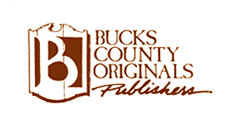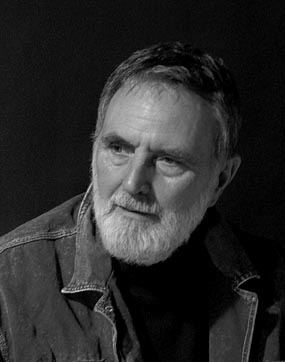

 |
||||||||||||||
 |
||||||||||||||
 |
|||||
David Frame is an award-winning Bucks County, Pennsylvania artist who works in multiple media and handles a wide range of subject matter. His work displays the proficiency of an artist who is highly skilled and exceptionally creative at the same time. Technical diversity is the hallmark of David's work, choosing his medium/technique, pallete, brush work and composition to suit his subject. David was born in West Virginia and moved to Ohio at age seven. His father came from a musical family that made dulcimers and guitars. In school David was noted for his art ability. By age seventeen, convinced there were no opportunities where he grew up, he decided to travel. David Frame's professional career began as an illustrator in Chicago for a company that specialized in bank and theatre displays. Soon after he secured a position as a high-fashion window designer for the prestigous Marshall Field's department store. During this time he lived in north Chicago in a small community of students attending the famed Chicago Art Institute. At one point he lived at the YMCA hotel where he became friends with many International Exchange students. This experience was very educational and broadened his cultural and artistic views that would affect his future work. In 1957 David relocated to New Orleans and worked as a freelance window designer before taking a position with Mardi Gras inc. At Mardi Gras, he designed costumes and cosmetic design for the famous carnival floats. On weekends he further developed his drawing and painting skills doing pastel portraits and watercolor street scenes at Jackson Square in the French Quarter. David accepted an important opportunity to work as a steamship clerk on the New Orleans riverfront checking import and export cargos. Here he had the valuable experience of meeting and exchanging ideas with foreign people from around the world. Drafted into the army and trained in communications, Frame was sent to Korea where he studied the local customs and completed a series of drawings featuring the townspeople in traditional dress and the rice farmers nearby. He supervised a craft shop for G.I.'s that employeed Korean nationals. There he studied terra cotta sculpture and bronze casting techniques. In Japan on an extended leave to Toyko, he had the opportunity to study the methods of Japanese calligraphy and woodblock printing that would later have strong influence on his experimental work. In Kyoto he attended several performances of the traditional Kabuki Theater and became fascinated with costume design and makeup/mask making. The Japanese experience challenged his western ideas about the function and meaning of art. Unsettled after the military, he decided to travel Arizona and Colorado working mostly in watercolor because of its immeadiacy and did not require a studio. The best of this work was from Estes Park and Central City, Colo. After his time in Colorado, David returned home to Ohio. There he studied briefly under nationally known Marc Moon (art school instructor); watercolor, landscape. Frame's western work was well recieved but he was uninspired by the flat Ohio Landscape. He opened a small studio and concentrated on figure painting and portraits. Recently married, new opportunities moved David to Bedford County (Central PA). Impressed by the rugged landcape, he returned to oil painting. For a few years he worked in radio as an announcer (news - AM & FM in its infancy). He created Nightwinds a late night program featuring jazz and classical music -- which continues to influence his work. Eager to move his career back into art, David took a position with Media House, an advertising agency in Blair County, Pennsylvania. Settled in Bucks County in 1971. Became intrigued with Bucks County's reputation in the arts and it's place in American history. He immediately began painting local landscapes with a focus on Delaware River towns. In 1973 he opened the David Frame Shop and Gallery in Doylestown, PA. To allow him to control the printing of his limited editions, David mastered the art of silkscreen printing. In 1972 David shows at the Bucks County Court House as well as The Doylestown and Quakertown Arts Festivals. He wins first prize at the Sellersville Gallery In The Park for professional watercolor painting. (Ranulf Bye Juror) In 1973 David started his Doylestown streetscape/landmark building paintings when most observers were wondering why anyone would bother. No artist to this point had centered their interest on this small town. "I feel this community has an important future," David was quoted in a local newspaper. By 1975 he is represented in several of the County's important corporate and private collections. Regionally, David is known for his Bucks County landscapes, corporate portraits and his Historic Doylestown streetscapes and landmark paintings. Meanwhile, his experimental work is being supported by a small community of collectors. In 1976 David moves his gallery and frame shop to State Street in Doylestown. He also opens a studio at the Lenape Building (a Bucks County Architectural landmark) where he begins the well known Varina series (ballet figures). Creates an important watercolor called 'Dance' that would become one of his most popular limited edition prints. He also creates and prints a five-color silkscreen named 'Celebrate The Arts- People Places And Events.' The image makes the cover of Bucks County Panorama Magazine and the front page of the Intelligencer, the primary regional newspaper.
A longtime admirer of Jackson Pollock's groundbreaking technique, David decided to complete an experimental series of paintings using action/gesture painting to create representational subjects. This led to a series which was silkscreen printed and continues to be part of his current work. 1978 Has a groundbreaking show at Doylestown's County Theatre. Marquee reads "Paintings are Windows on the Mind." Attendence fills the theatre to capacity. The show receives significant regional news coverage. In 1983 David creates 'Mardi Gras Romance' that is distributed as a serigraph by a national publisher. He also shows at the original New York City Art Expo held at the New York Colliseum. The work attracts international critical interest. 1985 Shows at the Invitational International Show in Paris. Critics like
David's traditional work, but express particular interest in his black and white silkscreen prints of action painting depicting traditional subject matter.
David spends his free time in the Louvre, Muse d'Orsay and the local galleries of Montmartre. This trendsetting work is rapidly copied by younger and hobbiest artists working in the area. It is clear that David's eye for historical and architectural significance are becoming a hallmark of his traditional work. In 1986 the 'Historic Doylestown' print wins the Gold Medal presented by the Graphic Arts Association. 1987 Returns to Paris via Amsterdam to show his 'Dance' print as well as his black and white silkscreens at Gallerie Chabin at the Viex Montmartre Gallerie. He visits the Louvre, French Impressionism Museums and Musee d'Orsay to study. His European trip includes a new Monet exhibit and a sojourn to Florence to see Michaelanglo's sculpture and Botticelli's paintings. He makes a specific detour to see the artifacts of Leonardo da Vinci's studio. Meets Edward Redfield's daughter-in-law; studies family collection of EW Redfield originals. 1992 Meets football great, Reggie White - Creates lifesize painting (six feet seven inches), and develops limited lithograph for the Cystic Fibrosis Foundation. Prints are signed by Reggie and David Frame at the Philadelphia Zoo. Reggie adopts zoo eagle. There is also special showing and signing at the Bucks County Warrington Country Club. In 1993 David met with Bill and Bob Waite at the Doylestown Inn, publishers of Bucks County Town and Country Magazine. They proposed a unique idea: to use David Frame's original art for the covers of the magazine. The rest, as they say, "is history". What began as an experiment has become the magazine's trademark. He became Bucks County's Artist-in-Residence. In fact David's covers received national praise by winning a much coveted OZZIE award for best cover. 1995 David shows at Art Expo, Jacob javits Center, New York City with a well-known patron/collector, featuring 40x60 inch pastels of dancers which sell mostly to Japanese and Dutch collectors. 1996 attends Art expo - meets artist Peter Max - talks silkscreening and contempory art. Meets sculptor Richard MacDonald and is strongly influenced by his work and his opinions about art collectors. 1997 David meets Meredith Richardson, the new executive director at the Pearl S. Buck Foundation. Employeed as a consultant, David collaborates with noted graphic designer David Price to concept, design and write a new publication for the international charity organization. The result was a new cross-cultural logo/identity and the launch of "Outreach" the organization's primary fundraising tool. The team go on to design the (Art Deco inspired) Cross Keys Diner Logo and Studio North Bucks. 1998 Wins coveted Bucks County Chamber Of Commerce Lifetime Achievement Åward. Paints portrait of famed novelist James Michener for the cover of Bucks County Town & Country Magazine (BCT&C). David receives letter from Michener giving him permission to do the portrait. David is commissioned to create the cover for The New Jersey Travel guide, "What a difference a State Makes." He paints the Famous Sandy Hook Lighthouse. This leads to a series of original paintings depicting all of New Jersey's lighthouses. 2000 Paints important works: 'Doylestown an American Classic, I and II' which are published as Giclee limited edition prints. Develops a new monoprinting method that does not require a press. Prints a series of works about Coffee/Cafe figures. An important article showcasing the work appears in BCT&C magazine written by Editor Bob Waite. 2001. Does collectible cover of Doylestown's Kennys News agency/ Class Harlan office. Meets and does portrait of Grover Washington, Jr. He also completes a cd cover for Jazz bassist Charles Fambrough. See Bucks County Town & Country article, "Jazz in Bucks County." 2004 Creates a drawing style especially for a series of eight drawings for "Doylestown a Portfolio" 10x13 inches. The completed drawings are featured in an important article written by Editor Bob Waite. Covered Bridge painting becomes a cover and is published as a Giclee limited edition print. 2005 David makes public his behind-the-scene work in Video Documentary on his art and the tenatively titled " Tell Me What You See" which examines how subjects perceive abstraction. Currently editing twenty six hours of video featuring twentysix people verbally describing their interpretation (emotional and visual) of the abstract images. Images were drawn from the artist's personal collection of photographs, illustrations and fine art. 2005 Completing paintings from trip to France with his wife Paula and other work of personal interest: Of note: a day of abstraction where a gigantic dappled board of oil paint was examined for small sections of artistic value. Nearly 100 selections were captured using high resolution macro-photography. The exercise exemplifies David's critical eye for color ratios, shape and form. He would often find sheer beauty in a patch of cracked pavement or a spill on the sidewalk.
|
 |
||||